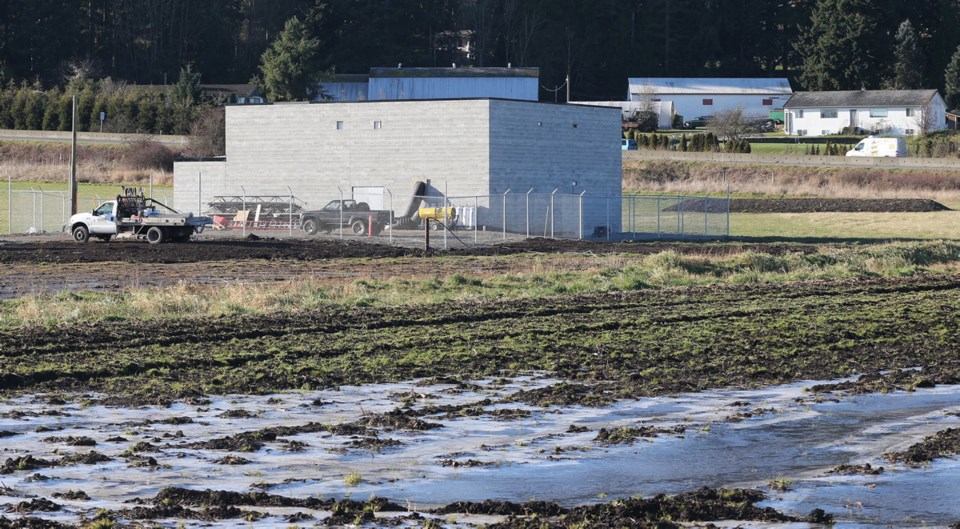 Clearly visible from the Pat Bay Highway, plunked in the verdant farmland off Lochside Drive, is a rectangular, windowless cinderblock building surrounded by a security fence.
Clearly visible from the Pat Bay Highway, plunked in the verdant farmland off Lochside Drive, is a rectangular, windowless cinderblock building surrounded by a security fence.
It’s a medical marijuana operation, or at least a would-be one, owned by a local company called Evergreen Medicinal Supply Inc.
In Nanaimo, $10 million is being poured into construction of a much larger, 60,000-square-foot Duke Point pot factory owned by a company called Tilray, the production arm of Lafitte Ventures, the Canadian subsidiary of Seattle private equity firm Privateer Holdings.
Neither is among the dozen Canadian medical marijuana operations licensed by Ottawa so far, but they’re farther ahead in the process than most of the several hundred other companies that have applied to open high-tech, highly regulated, laboratory-like grow shows.
Today is the day the medical marijuana industry becomes, well, an industry.
Health Canada, having reluctantly wrestled with this political porcupine for more than a decade, is shoving it into the arms of the private sector today — much to the delight of bureaucrats and commercial growers, but not to sick, poor people who fear they won’t be able to afford their medical pot.
In fact, those people recently won a court injunction allowing them to keep growing their own weed, which could undermine the fledgling commercial operations.
Up until Monday, medical marijuana users licensed by Health Canada were able to get their drug in one of three ways: buying it directly from the government at $5 a gram, growing it themselves or having it provided by a small-scale designated grower.
As of today, the rules say it’s up to physicians to license users, who may only get their marijuana shipped from one of the newly approved firms. Ottawa changed the rules in an attempt to bring order to a program peppered with concerns about oversight, violent ripoffs, fires caused by dodgy wiring, and garden-variety drug dealers hiding behind medical marijuana licences.
But users say Health Canada is throwing the baby out with the bong water, abandoning the people the program is meant to help. For example, one ailing Victoria man wrote in to say that while he can afford to grow his own pot for 75 cents a gram, his disability cheque will quickly disappear if he’s forced to pay the anticipated $8 commercial rate.
On March 21, the Federal Court granted a temporary injunction to those holding personal-growing licences. Ottawa announced Monday that it is appealing the ruling, but for now those with valid permits can continue to grow their own with impunity (though it should be noted that police have indicated going after such people would not be a priority in any case).
That’s particularly significant here in B.C., where almost half of Canada’s 35,000 currently licensed medical marijuana patients live.
Of the 22,332 Canadians with permits to grow their own, 12,143 are from Lotus Land. Yup, nothing like living up to a regional stereotype, Cheech.
British Columbians appear to be much bigger believers in medical marijuana than is Health Canada, which has only been in this business grudgingly. The department makes a point of stating that marijuana is not an approved medicine, that it doesn’t endorse its use and that the feds only have a medical marijuana program because the courts forced them into it in 2001.
Still in a grey area are the medical marijuana dispensaries for which there is no provision in law, but which have been protected by court rulings that they are filling a need Health Canada has failed to fill. Victoria has at least five of them.
Meanwhile, producers are clamouring to get in. As of early February, Health Canada had 454 applications from would-be commercial growers, with more coming in at the rate of 25 a week. A dozen have been licensed under the multi-stage approval process, and at least 27 have been told they’ll be OK’d if they build in the manner promised. On Monday, a painter toiled inside the Evergreen cinderblock production facility in Central Saanich, getting ready for the governmental green light; as a permitted use under the Agricultural Land Reserve, they already have the zoning.
So much for the days of the Fabulous Furry Freak Brothers growing a few plants in the garage.



